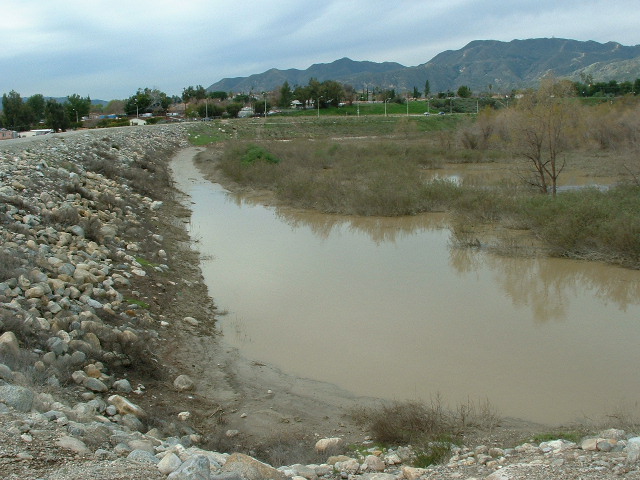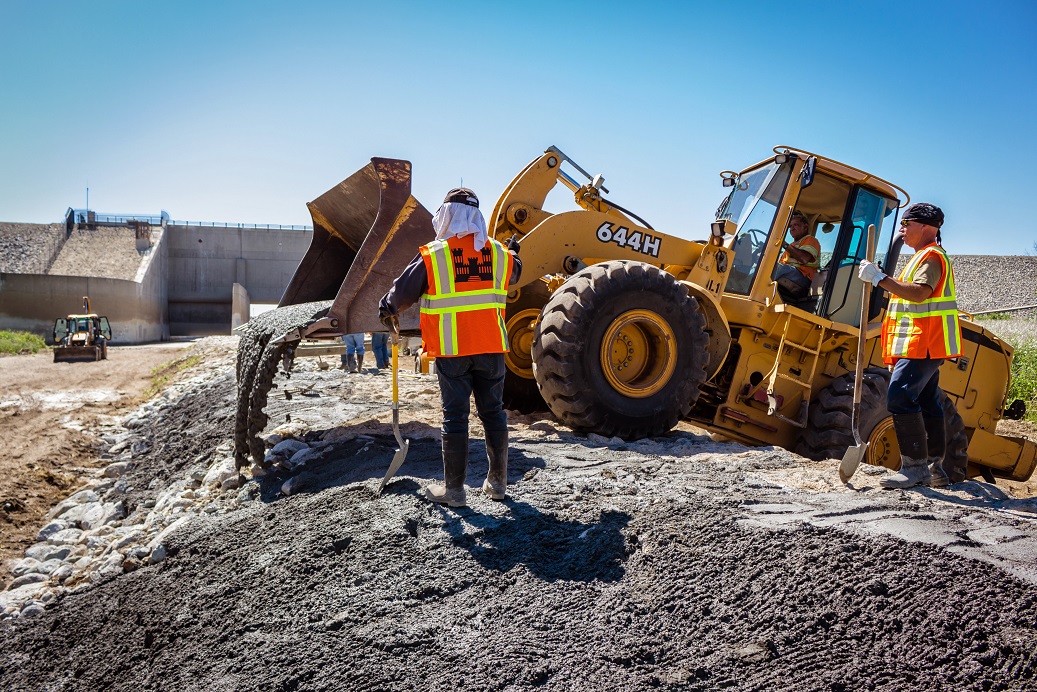
Lopez Dam and Reservoir was built by the U.S. Army Corps of Engineers, Los Angeles District in 1954. It is located near the city of San Fernando on the Pacoima Wash in the northcentral part of the San Fernando Valley. The primary purpose of the Dam is flood risk management. The Project is also authorized for recreation.
Lopez Dam and Reservoir are integral to the Pacoima-Tujunga Wash system of tributaries and to the Los Angeles River, protecting the Los Angeles River from debris laden floodwaters. Their physical components include the following elements: an earth-fill dam and land that forms the reservoir when there is an impoundment due to rainfall runoff from the upstream watershed. The Corps reserves 20 acres of the 119 acre Dam and Reservoir area exclusively for routine maintenance of the Dam. The remaining 99 fee acres are reserved for compatible uses with a preference towards recreation purposes. Currently there are no recreational facilities at Lopez Dam and Reservoir.
For detailed physical data and current water pool information visit the Reservoir Regulation page. Additional information on Lopez Dam and Reservoir can be found in the Lopez Dam Basin Master Plan.
Safety First

Keep yourself safe when visiting the many public facilities in the reservoir by being aware if the potential for storms is being forecast. The Reservoir is designed to hold back large quantities of water and can fill very quickly. Check the local weather forecast before enjoying the many recreational opportunities in and around the reservoir.
Environmental Resources
The Corps evaluates environmental effects of all actions taken at the Dam and in the Reservoir. Biological surveys are conducted in the Reservoir throughout the year by the Corps and the Corps partner agencies.
Wildlife species are found within the Reservoir. Riparian and upland habitats host a diversity of passerine species such as Brewer’s blackbird (Euphagus cyanocephalus) and California towhee (Melozone crissalis). Bat species are also present and use the Reservoir for roosting, breeding, or as year-round residents. Dry upland areas host common lizard and snake species. Non-native species such as feral cats and dogs are also found in the reservoir.
Native vegetation communities identified in the reservoir included southern willow scrub, California sage brush scrub, and scalebroom coastal scrub. Non-native habitat types are present in the Reservoir and include disturbed upland and ruderal land.
Maintenance Activities

The Corps engages in routine maintenance activities within the operational areas of the Reservoir year round to maintain the operational capacity of the project. As congressionally appropriated funding allows, the Corps works to upgrade aging structures and systems. Annual maintenance activities at US Army Corps of Engineers operated dams include grading of access roads, vegetation removal, and an annual safety inspection. In addition, the control house, gates, and all mechanical and electrical equipment is checked at each dam to make sure that it is functioning in accordance with the Dam Operations Manual. Graffiti removal, clearing of debris and sediment, and additional repairs are performed to maintain the facility.
Review Upcoming Proposed Actions
To review public notices on our upcoming proposed maintenance activities please visit the Public Notice postings page or click the “Public Notice” link found in the navigational side bar.
Questions, Concerns, Comments?
Let us know by clicking the “Contact” button in the navigation bar and choose Operations Division as the recipient.
The appearance of external hyperlinks does not constitute endorsement by the U.S. Army of this Web site or the information, products, or services contained therein. For other than authorized activities such as military exchanges and MWR sites, the U.S. Army does not exercise any editorial control over the information you may find at these locations. Such links are provided consistent with the stated purpose of this Web site.